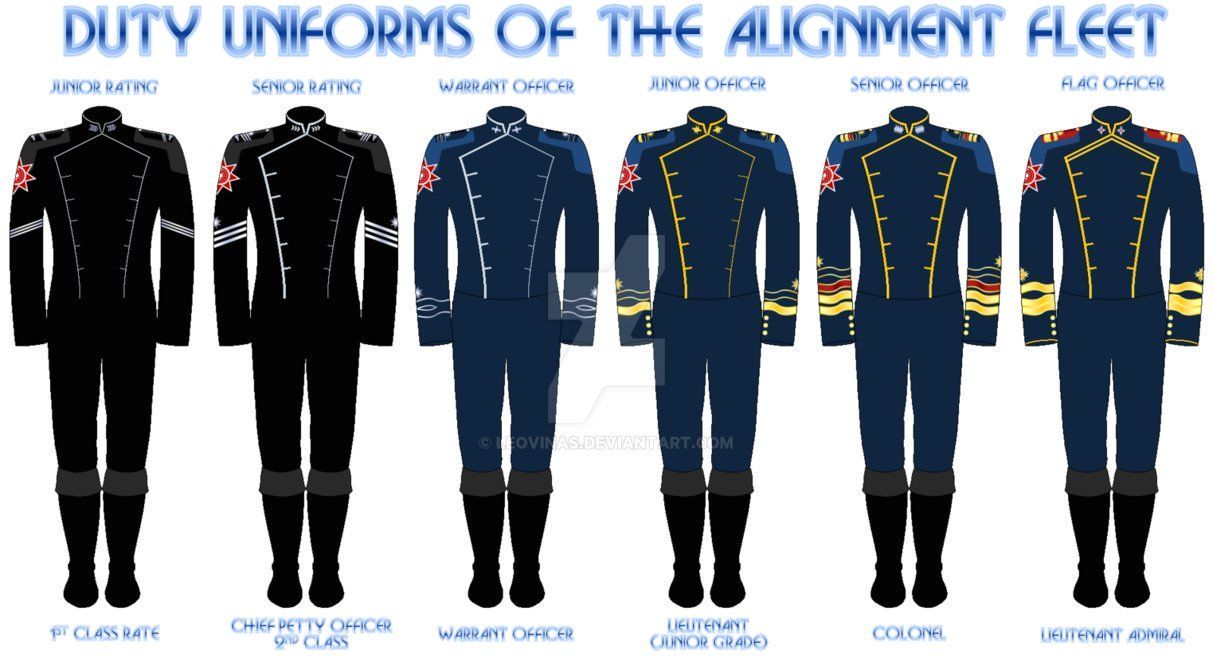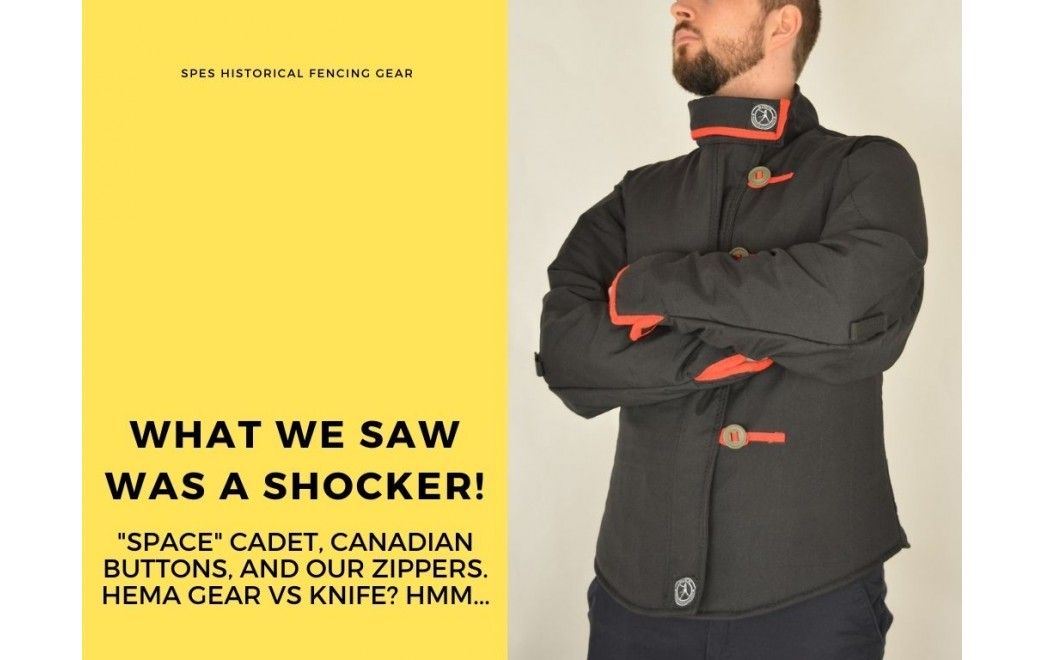Matt Easton reviewed our Cadet jacket. What we saw was a shocker!
Matt Easton reviewed our Cadet jacket. What we saw was a shocker!
In the beginning of February, Matt Easton on the Schola Gladiatoria channel published a review of our “new” Cadet Level 2 jacket. It’s been a while since the premiere, which was in June 2020, but due to the pandemic, the review had to wait some time, and it was hard to test the gear in combat (still, we hope to see the “practical” part of the review in some time!).
Let’s come to the point. When we started the review, it was quite a shock for us that such an important topic of the video will be… the Canadian buttons! The topic also gained a large interest in the comment section. Even Canadians admit that they are not sure what these are. Today you will find all the truth about the Canadian buttons, and much more!
So… What are the Canadian buttons?
That’s right, the Canadian buttons, also known as slotted buttons or ITW bar buttons. To solve the dilemma once and for all and describe what they are and why we call them that, we have to go back in time. It’s a solution from half of the 20th century. Despite being similar to the Chinese fortune coins, originally they come from Canada, where they are often used in military gear. Sometimes you can find them in other countries, like Great Britain and Combat Soldier 95 uniform or Personal Clothing System.
Unlike the standard buttons, Canadian buttons are characterized by a completely different system of attaching. Regular buttons can be attached in two ways. You can sew them on with a thread by dragging it through the eyelet, or through the holes (usually in the number of two or four). When the button is exposed to various forces (like with the use of a sword), there is a risk it will fall off or become damaged.
But the Canadian button has two openings of approx. 10 mm length each. A strip is being dragged through them, which is a much more durable solution than a thread. It also makes the button “mobile”, as it can slide on the stripe. What is more, the buttons are made from an elastic plastic, so they do not crack after hitting. This is a much more secure choice than traditional buttons. As they are produced according to the military specification, their general quality and parameters are very good.
That’s enough for us to implement this model in our Cadet, but also in Attila and Cavalry Trousers. If possible, they will appear in other projects. If you have any suggestions on this solution, feel free to leave a comment or send us an email!

Space Cadet, SPES Cadet… or SPES Space Cadet?
“That’s not the space cadet I was expecting… “ – similar comments haven’t missed our attention. ?
If you want to know our opinion, we believe this model fits better a retro convention and naming it “Space Cadet” would be overshoot. We are just starting with the gear inspired by SF productions (like our Future Soldier). What is more, we don’t want to get in the way of the newly formed US Space Force. (And we have to deny any information about our partaking in making a concept of the US Space Force uniforms. It wasn’t us, seriously!).

Can Cadet jacket prevent a stabber attack?
In the comment section some of the viewers asked about the inner pocket of the jacket, also suggesting wearing the gear in the most dangerous areas of London or Chicago. So – when it comes to the knife puncture resistance, we want to inform you that the jacket itself won’t be enough to protect against the attack. Standards of the International Fencing Federation are supposed to protect against accidental breaking of the sport blade, not against dangerous, repetitive attack with the purpose of harming the body.
However…having those inner pockets, we can buy a composite which is 3-4 times thicker than a standard 800N jacket. With that, we could meet the requirements of stab vests, often associated with the first level of the ballistic protection against short firearms. You could risk meeting a stabber, wearing 2-3 layers of our composite on the sensitive sections of a body, but it still won’t meet the requirements of stabbing resistance for bulletproof vests. ?

Immortal like Lambert? Use the ballistic insert
As you already know, the Cadet jacket like other SPES models (for example AP Light or Attila) has cushioning foams of 10 mm thickness. In most cases, it’s enough. This foam can be easily cut into pieces, so fitting it in the jacket is easy. What is more, pockets are designed to fit two layers of so called “intelligent foams” with better amortization.
As somebody has noticed, you can also put a composite into the pockets (for example 1600N – so twice as thick as 800N), or a ballistic insert, which will increase your chances on the battlefield by making you “immortal” (however, as a manufacturer we advise not to take it too seriously, just like others warn about using the hair dryer under a shower – just in case).
But seriously – if there’s a need, we are open to custom orders for unusual pocket inserts – like kevlar or 1600N composite, or anything else. Just let us know.

A button’s a button, but what about a zipper?
Let’s come back to the closure issue. Apart from the buttons, Cadet also has a zipper. In comparison to the Canadian buttons, it’s a bit more complicated solution – because of the number of various parameters. You often ask us about types of zippers used in our gear. Sometimes you recommend your own proposition we could try (which we always take into consideration).
We can say a lot about zippers, but let’s skip their history (which is longer than the history of the mentioned buttons – you can ask aunt Wikipedia). Instead, we have prepared a quick course on zippers and their features.
Ready? So let’s start.
Read to me, Histfenc: about the fascinating world of zippers in a nutshell
- When it comes to the types of zippers, there are two of them: closed and separated. First type can be found in, for example, trousers, in places where the right side and the left side of fabric are joined near the lower edge. Separated zippers are used in jackets and blouses; so, where both sides of the clothing can be easily separated.
- There are also zippers with or without a lock. It keeps the slider in one place, even during intensive movement.
- Due to ways of mounting the zipper, there are two types of them – coil or molded (plastic, metal). It refers to the tape which is sewn to the fabric and the way cloves snag each other.
- A zipper can be standard or reversed. One type has visible teeth, while the other looks almost like plain fabric. This makes a zipper nearly invisible.
- This solution is implemented also in the waterproof zippers (thus we have another feature), which are often impregnated on the tape part and stitched with teeth downward, just like in reversed zippers.
- Another thing are the materials used in a zipper. Usually it’s metal or plastic. It has the influence on its durability, prestige (plastic in jeans? yuck) and wear-resistance. There are chemicals which, in certain conditions, can make a “metal” zipper, made from bronze or tin, cover in patina, work badly, or seize up.
- Another important thing is size – usually provided in millimeters. It has the influence on durability. The bigger the zipper, the harder it is to separate its teeth, which makes it more expensive.
- What is more, a zipper can have one or two sliders, which makes it easy in dividing (upper part from the lower part).

As you can see, it’s a quite interesting topic, but also complicated. When it comes to zippers used in our gear, they usually have this specification:
- type: separated with one slider
- mounting: coil
- no locking (not necessary with the second closure, like in Cadet jacket)
- material: plastic
- size: 8 mm (so, high resistance to tearing up)
- not waterproof
- classic slider
That’s all on Matt’s review and Cadet jacket itself. If you have any questions, leave a comment. Don’t forget to subscribe to our YouTube channel, where you will find video presentations of our gear, but also tips on upgrading it and various advice.



Leave a Reply Cancel Reply